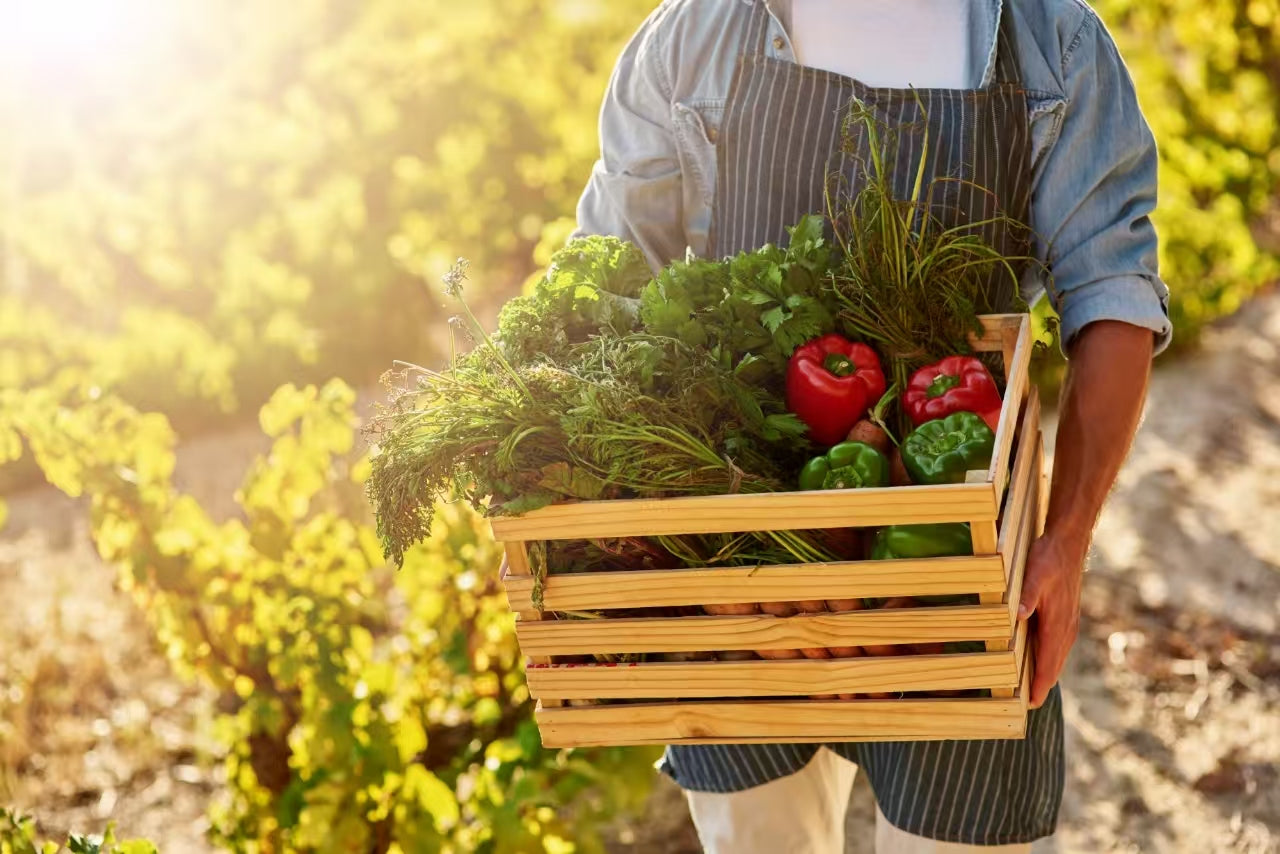Look, we all gotta eat. But if you’ve ever stopped mid-bite and thought, Wait… is this food actually good for the planet?—congrats, you’re already ahead of the game. Sustainable eating isn’t just about making sure your meals are healthy for you; it’s about making sure they don’t wreck the environment in the process.
And let’s be honest: With climate change, deforestation, and food waste running wild, our food choices matter more than ever. But don’t worry—I’m not here to guilt-trip you into growing all your own food, or surviving on kale and lentils. Instead, let’s break down some practical, no-BS ways to eat in a way that’s good for both you and the planet.
Why Sustainable Eating Matters
We’ve got three major issues when it comes to modern food production:
-
Environmental Impact – Industrial farming chugs out greenhouse gases like it’s an Olympic sport. Agriculture is responsible for about 25% of global emissions (IPCC, 2019).
-
Food Waste – Nearly one-third of all food produced goes uneaten. That’s 1.3 billion tons of food wasted every year (FAO, 2020).
-
Resource Depletion – Some foods require insane amounts of water and land to produce. (Looking at you, industrial beef.)
But before you panic and throw out everything in your fridge, let’s talk solutions.
How to Eat More Sustainably (Without Losing Your Mind)
If you want to eat in a way that’s better for the planet, here’s where to start.
-
Prioritize Whole, Plant-Based Foods
No, I’m not saying you have to go full vegan overnight. But here’s the deal: Plant-based foods require fewer resources to produce than most animal products.
-
Growing 1 kilogram of lentils emits just 0.9 kg of CO2, while 1 kg of beef pumps out 27 kg of CO2 (Poore & Nemecek, 2018).
-
Animal agriculture uses 83% of global farmland but provides only 18% of the world's calories (Science, 2018).
So, what can you do? ✅ Add more plant-based meals to your diet (think beans, veggies, and whole grains). ✅ Try Meatless Mondays (or at least Meat-Less Mondays, where you just cut down). ✅ If you eat meat, choose sustainably raised options (pasture-raised, regenerative farms, etc.).
-
Eat Local & Seasonal Whenever Possible
Food that’s shipped across the world = massive carbon footprint. Local and seasonal produce: ✅ Supports local farmers. ✅ Cuts down on transport emissions. ✅ Tastes way better because it’s actually fresh.
How to do it?
-
Hit up farmer’s markets instead of big-box grocery stores.
-
Check where your food comes from (those labels aren’t just for show).
-
Grow some of your own food (even if it’s just herbs on your windowsill).
-
Choose Sustainably Sourced Animal Products
Let’s be real: Meat and dairy aren’t disappearing anytime soon. But you can make smarter choices.
-
Look for grass-fed, pasture-raised beef and dairy.
-
Opt for wild-caught fish instead of factory-farmed varieties.
-
Buy from local butchers and farmers who raise animals ethically.
Sourcing matters. Factory farms are a disaster for the environment (and, honestly, for the animals too). If you’re gonna eat meat, do it right.
-
Reduce Food Waste Like a Pro
You could eat all the organic, locally grown food in the world—but if you’re tossing half of it in the trash, that’s still wasteful.
Here’s what you can do: ✅ Plan your meals so you only buy what you need. ✅ Store food properly (freeze leftovers, use airtight containers). ✅ Get creative with scraps (hello, veggie broth and stir-fry nights).
And if you do have food waste? Compost it. It beats sending it to a landfill where it just produces methane (one of the worst greenhouse gases).
-
Be Smart About Packaging & Processed Foods
Plastic waste is out of control. The more fresh, whole foods you eat, the less you contribute to it.
Easy swaps:
-
Bring reusable bags to the store.
-
Choose bulk bins instead of single-use packaging.
-
Avoid excessively packaged fruits and veggies (because seriously, why is a banana wrapped in plastic?).
Bonus: Whole foods are way healthier, so you’re winning in multiple ways here.
The Bottom Line: Small Changes, Big Impact
You don’t have to be perfect to make a difference. Just one or two simple swaps can cut your environmental impact significantly.
Start Here:
✅ Eat more plants (without ditching meat entirely). ✅ Support local, seasonal foods whenever possible. ✅ Choose ethically sourced meat, dairy, and seafood. ✅ Cut down on food waste (and compost when you can). ✅ Avoid unnecessary packaging and processed junk.
No, you don’t have to overhaul your entire diet overnight. Just start where you can, and make sustainable eating a habit—because it’s good for the planet and your body.
References
-
IPCC (2019). "Climate Change and Land Report." Intergovernmental Panel on Climate Change.
-
FAO (2020). "Food Waste Index Report 2020." Food and Agriculture Organization of the United Nations.
-
Poore & Nemecek (2018). "Reducing food’s environmental impacts through producers and consumers." Science Journal.
-
de Ruiter et al. (2021). "Dietary shifts needed to improve planetary health." Nature Food.
Meet Fitnexa, your AI-driven companion that turns everyday habits into a positive, uplifting journey. From effortless meal analysis (including recipe suggestions) to personalized coaching and real-time support, Fitnexa keeps you on track toward lasting wellness — so you can stay younger, live longer.
https://apple.co/4hr8JGW








Leave a comment
This site is protected by hCaptcha and the hCaptcha Privacy Policy and Terms of Service apply.